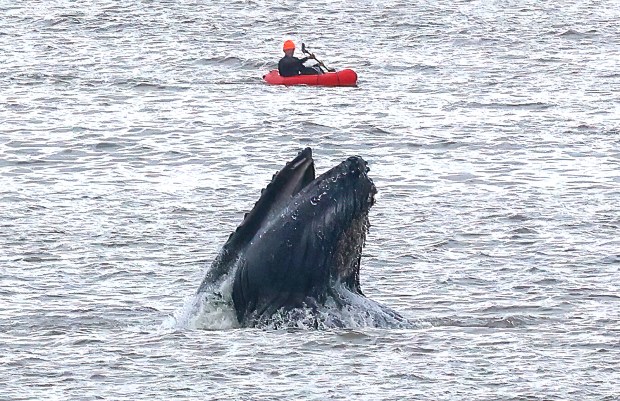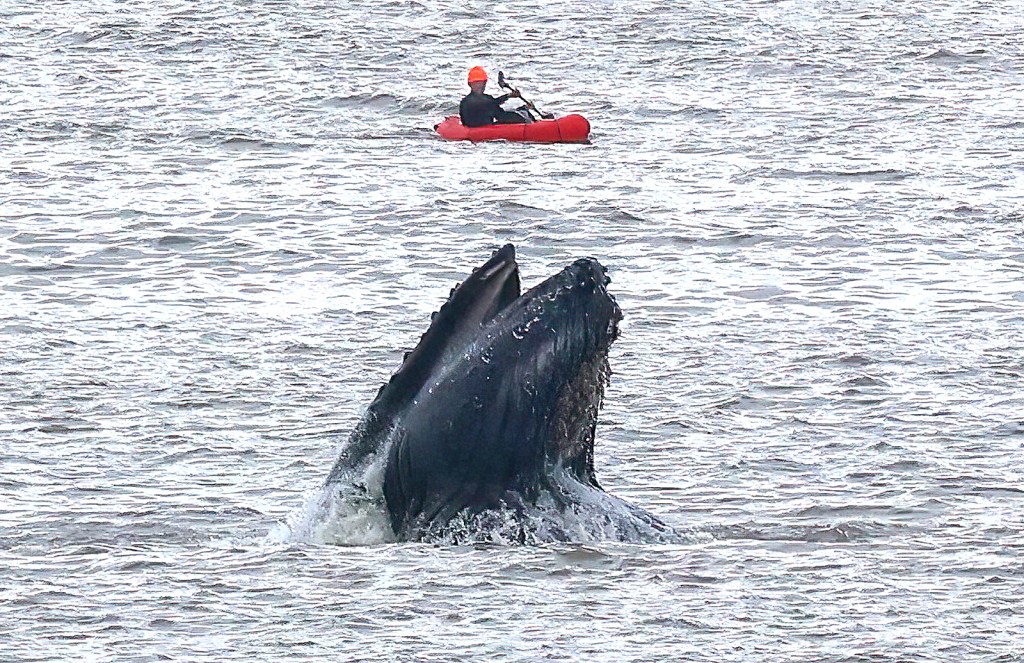A humpback whale, at left, surfaces close to the end of the Santa Cruz Municipal Wharf Monday morning. (Shmuel Thaler – Santa Cruz Sentinel)

A humpback whale lunge feeds Monday morning in front of a kayaker less than a half mile offshore from the mouth of the San Lorenzo River in Santa Cruz. Witnesses reported seeing a pod of at least six humpback whales feeding in the Monterey Bay off Seabright State Beach and thousands of birds were also at the site. The whales and the birds were likely feeding on a bait ball, which occurs when small fish swarm in a tightly packed spherical formation about a common center. (Shmuel Thaler – Santa Cruz Sentinel)
Show Caption
1 of 2
A humpback whale, at left, surfaces close to the end of the Santa Cruz Municipal Wharf Monday morning. (Shmuel Thaler – Santa Cruz Sentinel)
A humpback whale lunge feeds Monday morning in front of a kayaker less than a half mile offshore from the mouth of the San Lorenzo River in Santa Cruz. Witnesses reported seeing a pod of at least six humpback whales feeding in the Monterey Bay off Seabright State Beach and thousands of birds were also at the site. The whales and the birds were likely feeding on a bait ball, which occurs when small fish swarm in a tightly packed spherical formation about a common center.
According to the Marine Mammal Center, “lunge feeding is a type of filter feeding used by most species of baleen whales, such as humpback, fin and blue whales. For this hunting strategy, the whale propels itself through a school of fish or krill with its mouth wide open. The whale’s throat pleats expand as it collects large amounts of food and water, and then it closes its mouth and forces out the excess water through baleen like a strainer. During vertical lunges, whale watchers can see this incredible behavior as the animal’s head rises above the surface.”
After feeding near Seabright, the pod swam to the water between Cowell Beach and Lighthouse Point.

